
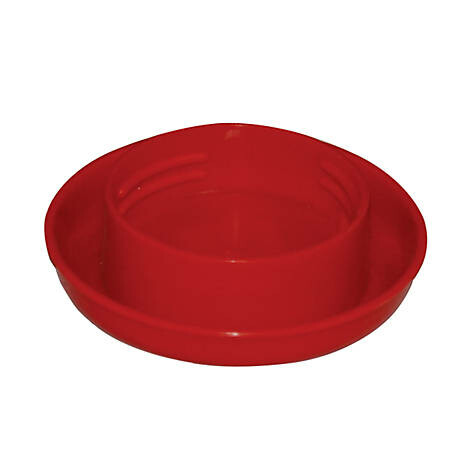
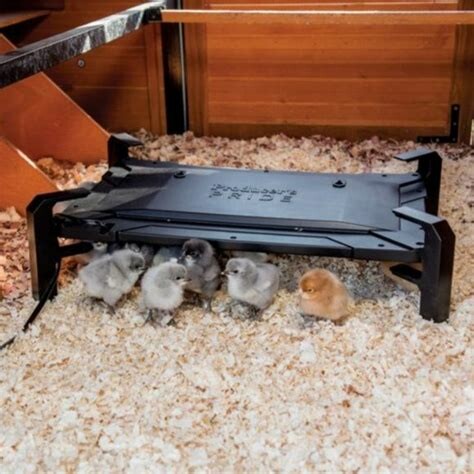 The first is a combination brooder/heater that has been our favorite for the last 2 batches of chicks. SO easy and less likely to cause fires in the brooder or in the coop. The chicks go under it if they need heat, and step out to eat, drink, or cool off. The only negative about this product is that it is large and takes up most of our brooder box. We did have enough space for the food/water and a little area for them to "chill". There always needs to be space in the brooder so that the chicks can get out from underneath and control their body temperature. This method mimics being under the mama hen and allows for quicker feathering.
The first is a combination brooder/heater that has been our favorite for the last 2 batches of chicks. SO easy and less likely to cause fires in the brooder or in the coop. The chicks go under it if they need heat, and step out to eat, drink, or cool off. The only negative about this product is that it is large and takes up most of our brooder box. We did have enough space for the food/water and a little area for them to "chill". There always needs to be space in the brooder so that the chicks can get out from underneath and control their body temperature. This method mimics being under the mama hen and allows for quicker feathering.
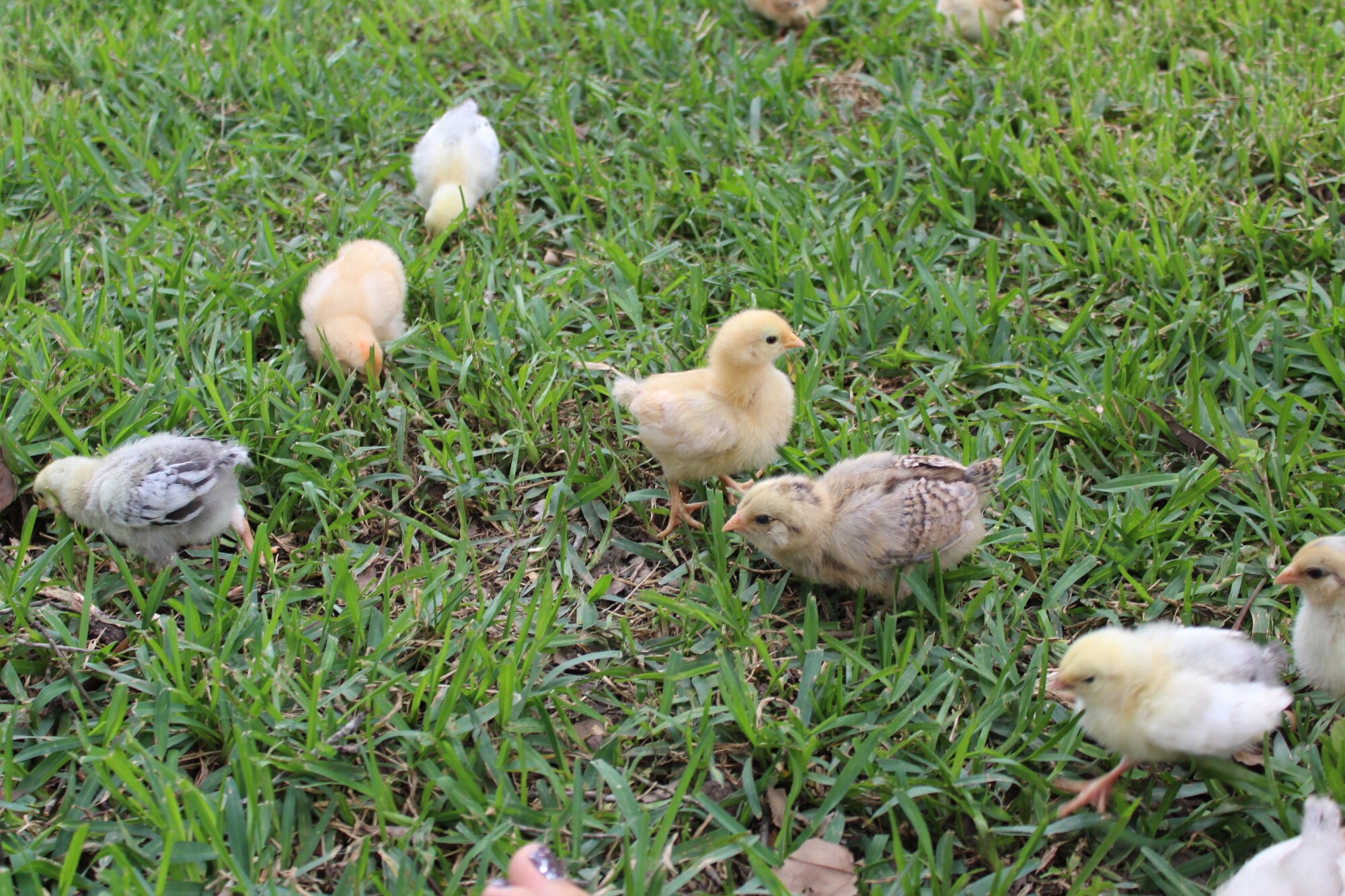
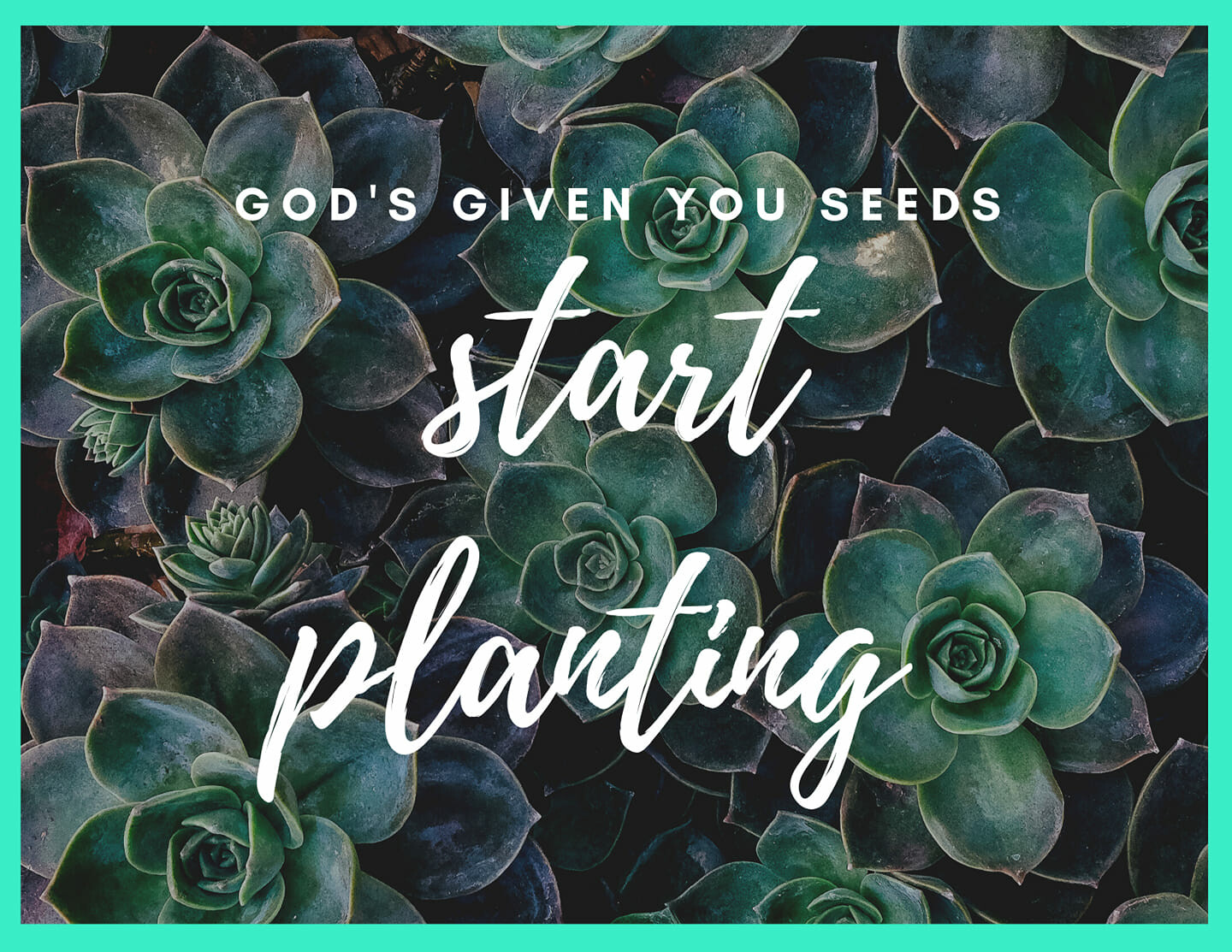
 SOIL
SOIL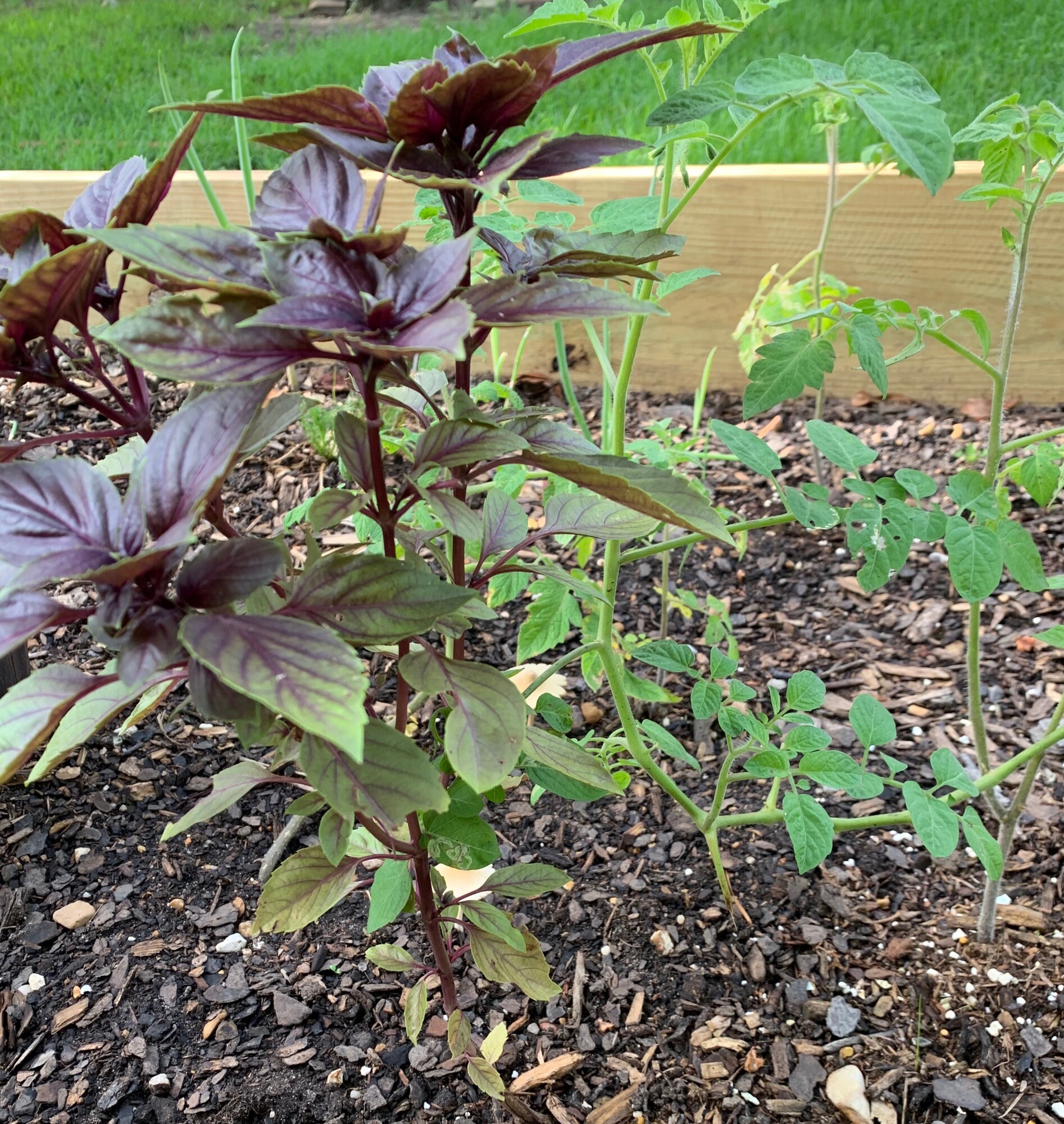
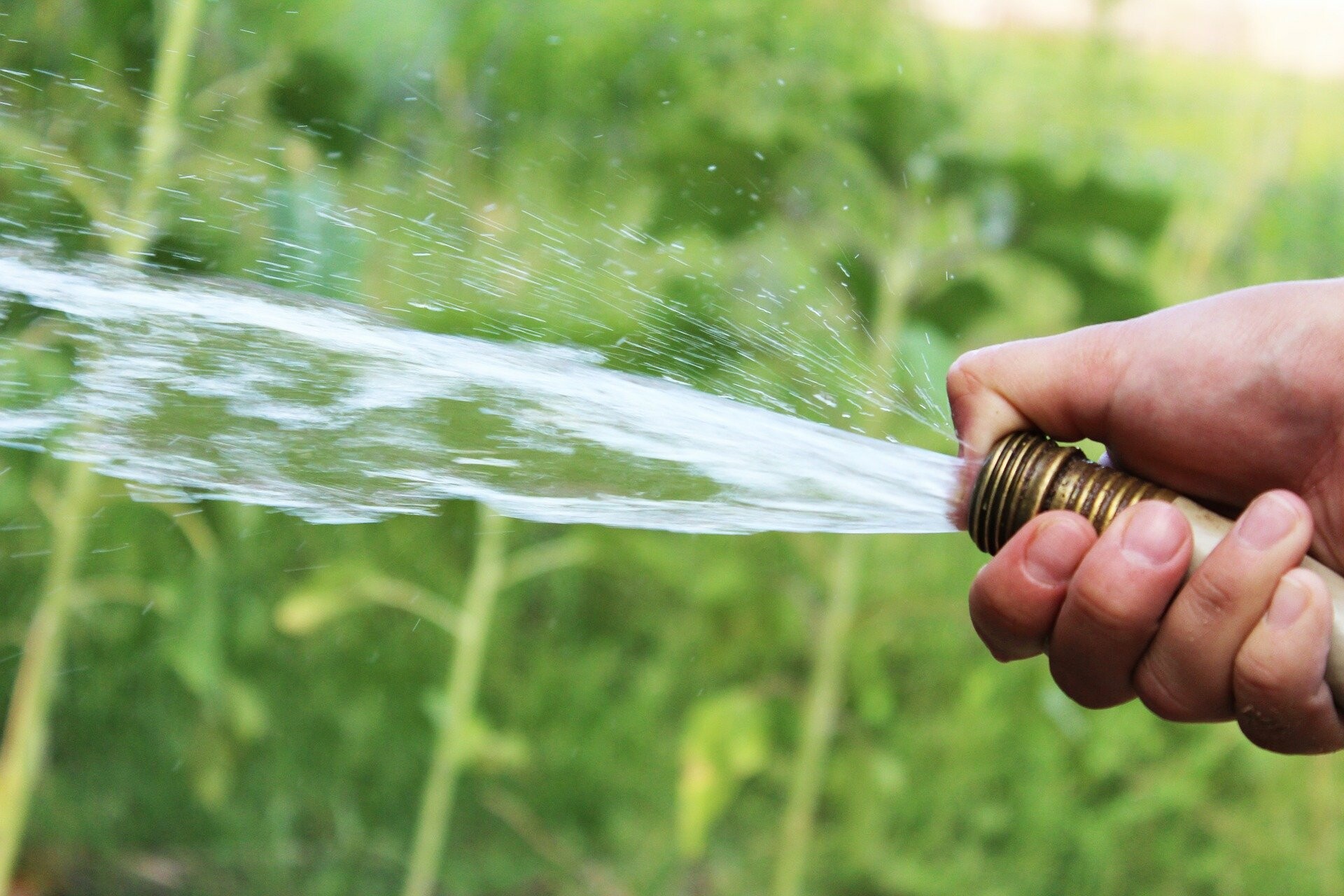
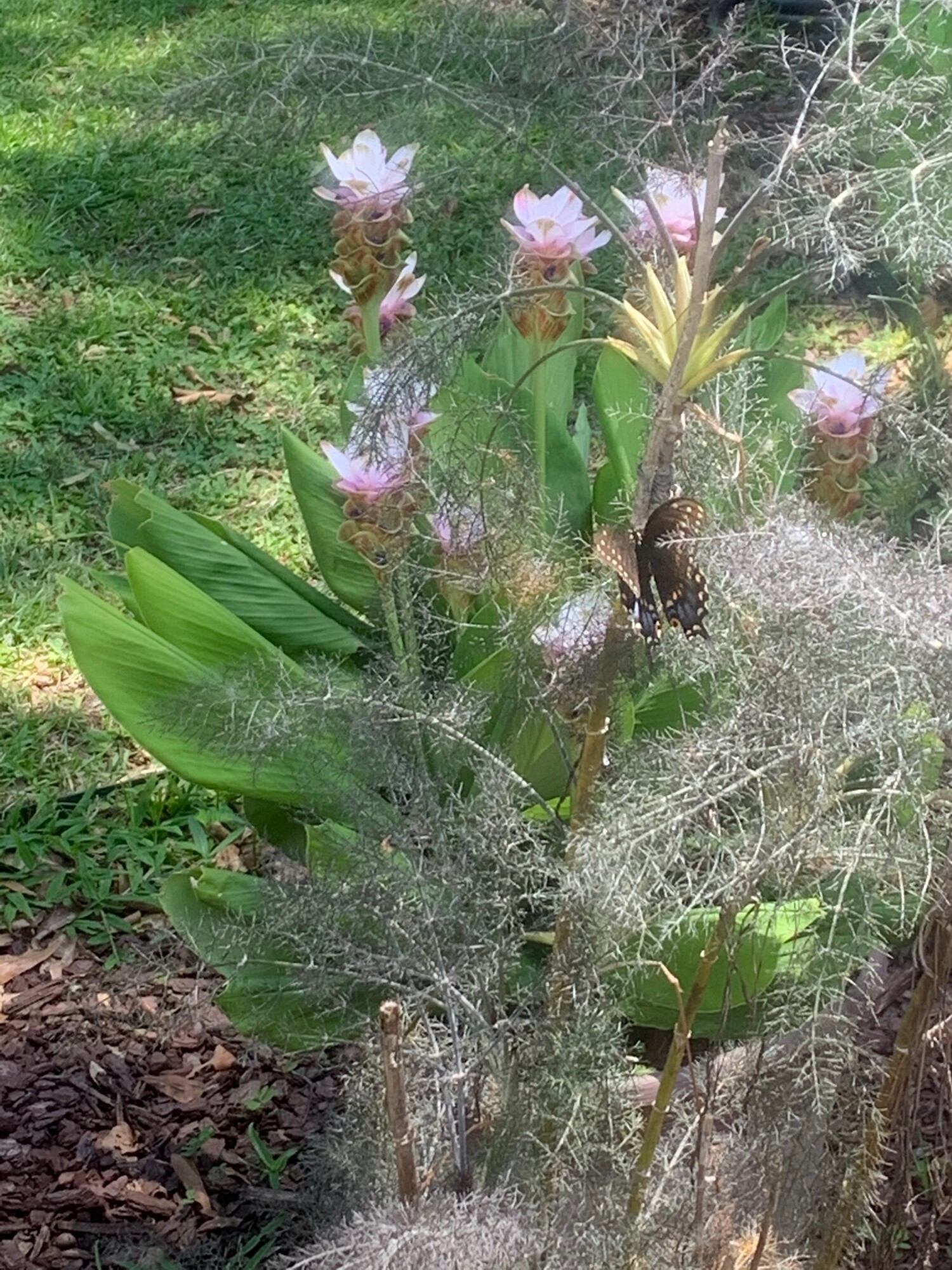
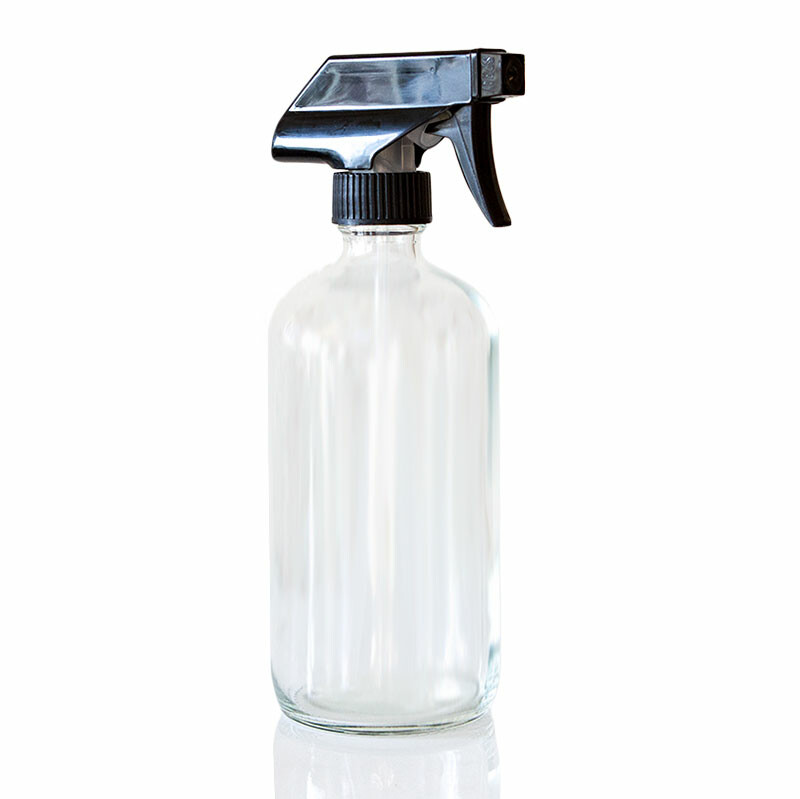 Keeping plants healthy and free from disease is not a one time check on your to-do list. When watering, look for damaged leaves, check underneath for bugs or caterpillars that can destroy your garden in a few days. Pick those off by hand any time you see them. If you get an infestation, it can be several times per day activity. Amend your soil to improve the health of the plant. Most of the time, bugs or diseases hit the weaker or sickly plants. One easy way we perk up our plants and deter bugs is to use the Thieves Household Cleaner in a spray bottle every few days. It has a soapy film to deter the bugs (and kill some, too), while at the same time giving the plants a boost in health and natural protection. Filled with essential oils, it's a plant's immune system at work! Cheap fix, too, as it only costs about $1 per bottle.
Keeping plants healthy and free from disease is not a one time check on your to-do list. When watering, look for damaged leaves, check underneath for bugs or caterpillars that can destroy your garden in a few days. Pick those off by hand any time you see them. If you get an infestation, it can be several times per day activity. Amend your soil to improve the health of the plant. Most of the time, bugs or diseases hit the weaker or sickly plants. One easy way we perk up our plants and deter bugs is to use the Thieves Household Cleaner in a spray bottle every few days. It has a soapy film to deter the bugs (and kill some, too), while at the same time giving the plants a boost in health and natural protection. Filled with essential oils, it's a plant's immune system at work! Cheap fix, too, as it only costs about $1 per bottle.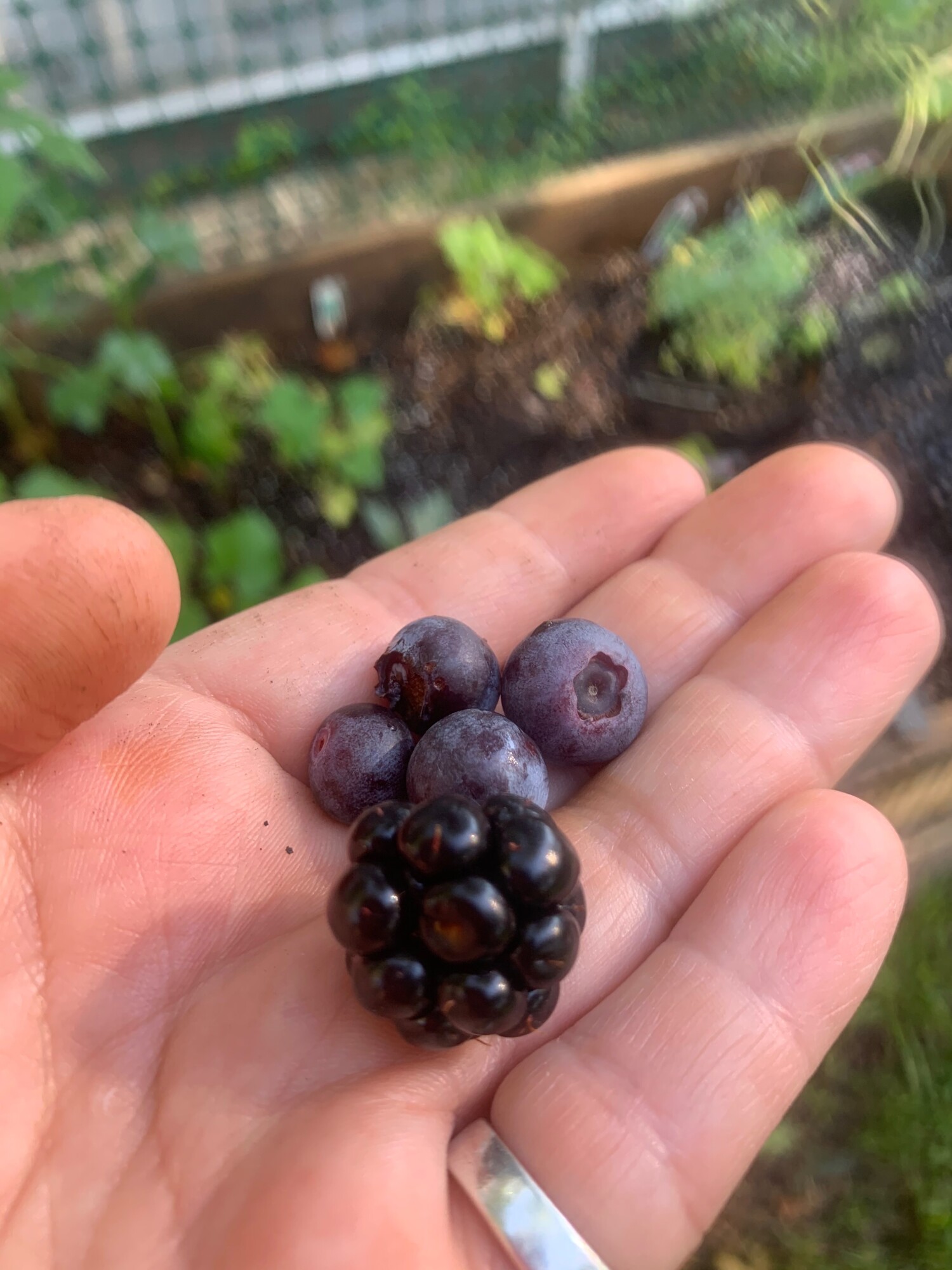
Enzymes are found in every living organism and involved in every process in the body. Digestive enzymes are needed to help facilitate our digestion, allowing us to break down our foods into smaller molecules so the nutrients can be absorbed from our food. Enzymes help make your food nutrients useful to the body and available for absorption and allow the body to be better equipped with the building blocks they need to be fully functional and operating. Enzymes make reaction processes happen faster in your body. Enzymes require minerals to perform and do their job and the body needs a variety of minerals for optimal function. When searching for places to source your enzymes, quality and purpose should be high on your list.
Did you know that enzyme production is decreased when you are exposed to stress, antibiotics, chemical cleaners, pain relievers, microwave radiation, food that is non-living (processed food), food cooked with high heat over 120 degrees, and even some raw food? This is because enzymes are used up when breaking them down. Enzyme levels decrease with age and enzyme excretion increases with age too.
Eating non-living food depletes our enzyme stores and they are not replaced without sufficient living food sources.
A healthy body will produce around 3000 types of enzymes with distinct roles within the body. When our enzyme reserves are diminished, we can not function optimally.
Most enzymes are proteins produced by living things. They are the catalysts in the biochemical process. In other words, they get things going and keep them going until their job is complete.
There are 3 main types of enzymes: digestive, metabolic, and food types. Enzymes facilitate building compounds, transport of elements, elimination, and the breakdown of substances in the body. Enzymes require minerals and vitamins to function. They are key players in the glandular and hormone process. Enzymes facilitate digestion and assimilation of nutrients.
Do I Have Enough Enzymes?
The gut is intricately involved in so many processes if we don’t have enough enzymes we could have trouble digesting our food. You can also have a combination of seemingly unrelated symptoms. This can all be related to our body not having enough building blocks for our body’s proper operation. Gut health is key to overall wellness. We need the gut operating optimally and one way to assist this process is through good digestive enzymes.
After digestion is completed and enzymes are finished breaking down, they enter the bloodstream as amino acids which are the building blocks for protein. Enzymes enter the bloodstream to cleanse foreign materials, help remove free radicals and potential allergens. Enzymes return to the liver and pancreas and are used again.
Digestive enzymes decrease the energy needed for actions within the body, allowing for better work efficiency, and helping to drive minerals and vitamins into cells faster thus allowing faster break down of food for nutrient assimilation.
A Few Enzyme Types
There are thousands of enzyme varieties. When you see words ending in ‘ase’ that means it is involved in breaking something down within the body.
Protease breaks down proteins.
Peptidases break down peptides into amino acids.
Amylases break down starches and sugars.
Lactase splits the milk sugar lactose, to produce the sugars glucose and galactose.
Nucleases break down nucleic acids.
Invertase carbohydrate-digesting enzyme that splits sucrose (common table sugar) into its component parts, glucose and fructose
Cellulase breaks down cell walls (cellulose from plant walls) and polysaccharides (carbohydrate molecules).
Pepsin breaks down proteins into smaller peptides. It is produced in the stomach and is one of the main digestive enzymes that aids in protein digestion.
Phytase relates to the breakdown of grain materials.
Trypsin (a type of protease) is formed in the small intestine when in its proenzyme form, the trypsinogen produced by the pancreas, is activated.
Remember when I mentioned that quality and purpose are key when supplementing your diet with enzymes? The 26-year-old company, Young Living, offers 5 types of digestive enzymes that are infused with pure, therapeutic-grade essential oils to complement the supplement.
Essentialzyme-4
Essentialzyme-4 is an animal and plant-based enzyme that contains lipase for helping to break down and digest fat. It also contains polyzyme, fiberzyme and carbozyme, these are enzyme complexes added to the supplement for additional enzymatic support. It has an enteric coated formula (HPMC) for delayed time release. The yellow capsule is immediate release, the white is delayed-release. HPMC helps hold the capsule together to allow it to make it further down into the digestive tract.
Essentialzyme-4 contains plant enzymes with a wide range of activity containing the enzymes protease, peptidase, lipase, amylase, glucoamylase, alpha-galactosidase, cellulose, and others. It is infused with ginger, fennel, tarragon, anise, and lemongrass essential oils.
Two food-based ingredients in Essentialzyme-4 are bromelain (from the pineapple stem, used in folk medicine as meat tenderizing agent) and carrot powder (contains highest enzymes found in the plant kingdom). The body accepts it as a completely natural, living enzyme formula.
Essentialzyme
Essentialzyme is a dual-layer animal based enzyme that contains pancrealipase. This enzyme breaks down fats, protein and starches. This helps prevent fatty bowel movements as fat should all be absorbed over the course of digestion. The key enzymes in Essentialzyme function with the pancreas for proper insulin and glucose metabolism.
It also contains trypsin, bromelain, Thyme leaf powder, alfalfa, papain, cumin seed, and the essential oils of anise, fennel, peppermint, tarragon, and clove. This enzyme can be taken around mealtime, but is best 30-45 minutes before a meal.
Detoxzyme
Detoxzyme is a vegetarian-based product containing amylase, invertase, bromelain, phytase, lipase, lactase, alpha-galactosidase. This supplement contains the fewest herbs and essential oils of all the enzyme products and may be a good option for people who are sensitive to taking essential oils by mouth. It does contain cumin, anise, and fennel. This supplement is especially good for digesting starches, fats, sugars, proteins. Detoxzyme is fast-acting.
Interesting fact, phytase is unique in that it can unlock the mineral content of many grains, nuts, seeds and other foods that contain high levels of essential minerals normally unavailable to the body.
Allerzyme
Allerzyme is also a fully vegetarian supplement and contains amylase, bromelain, peptidase, protease, phytase, barley grass, lipase, lactase, alpha-galactidase. Allerzyme contains maltase that breaks down sugars contained in brown breads. It is the only enzyme that contains lactase (for those that are lactose intolerant). The alpha-galactidase breaks down sugars found in beans and legumes, especially good for harder to digest starches.
It contains the highest number of essential oils compared to the other formulas with tarragon, ginger, peppermint, juniper, fennel, lemongrass, anise and patchouli. This is especially good for sugar and starch breakdown, smaller amounts of fat and proteins. This is the slow-acting variety. Allerzyme contains barley grass, so keep this in mind if you are sensitive to gluten.
How to Choose?
All of the enzymes contain amylase (helps to break down starches and sugars). All of them except Detoxyzme contain peptidase (breaks down peptides into amino acids).
Allerzyme has the most enzymes and the most essential oils. As with all Young Living products, the enzyme supplements are also infused with essential oils and were specifically selected along with certain herbs for digestive support. **vegan friendly
Detoxyzme contains the fewest essential oils. Consider Detoxyzme at bedtime for further cleansing. *fast-acting **vegan friendly
Essentialzyme has the most amounts of herbs. These can be taken with meals and throughout your day.
Essentialzyme-4 has contains plant enzymes with a wide range of activity and helps break down fat. *fast-acting
The delayed-release enzyme formulas are Essentialzyme and Allerzyme. These both can be taken early in the morning or between meals.
Enzymes For Kids (or chewables for adults)
Young Living KidScents MightyZyme is designed for children ages 2 and older. Digestive health is just as important to children and starting young is a key to maintaining a lifetime of health. This vegetarian, chewable supplement aides with normal digestion of protein, carbohydrates, and fats. It contains alfalfa leaf powder, amylase, protease, bromelain, lipase, carrot root powder, peptidase and phytase. It is infused with peppermint essential oil.
MightyZyme can be taken three times per day (1 tablet) prior to or with meals and is a chewable tablet. It is recommended that between the ages of 2 and 6 years old to take 1/2 tablet three times per day. Ages 7+ can take 1 full tablet three times per day. This is also an option for adults who prefer a chewable tablet.
MightyZyme can also be used for relief of occasional symptoms including fullness, pressure, bloating, stuffed feeling (commonly referred to as gas), pain and/or minor cramping that may occur after eating.
As with all supplements considering consulting with your health care provider to see if these would be a fit for your wellness regimen.



Eat healthier and eliminate processed food
CONSUME AN ANTIOXIDANT DRINK 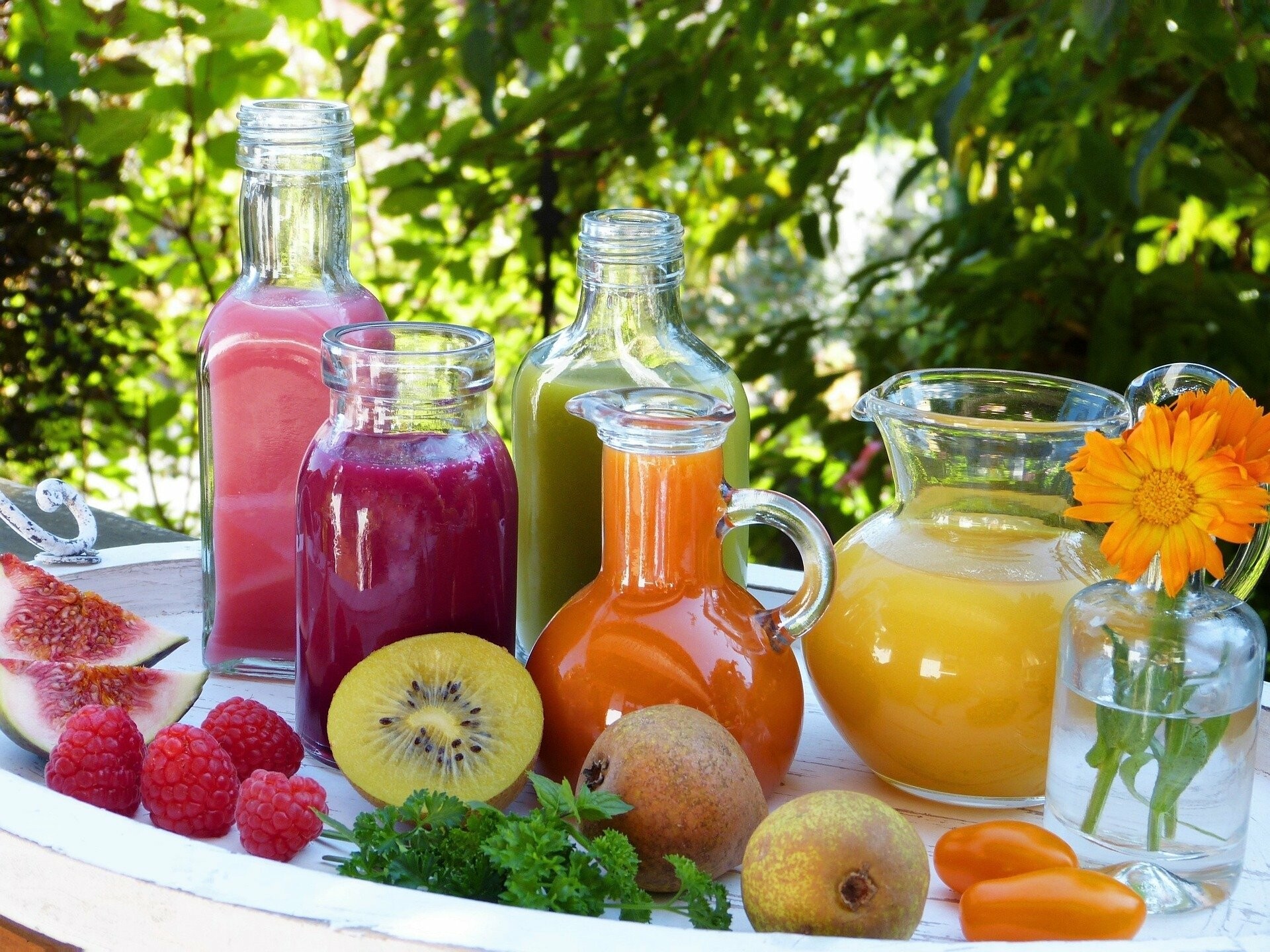
5 drops of Lemon
5 drops of Purification

- Sesame oil is the traditional oil of choice, but I didn't prefer that flavor so it went back into the cabinet for stir-frying.
- Coconut oil is my favorite and happens to possess strong anti-inflammatory and antibacterial properties that can be especially useful for oil pulling.
- Olive oil is another popular choice thanks to its ability to fight inflammation. I've used it in a pinch, but feel there are more benefits with coconut oil.
- Measure one tablespoon of oil, such as coconut, sesame, or olive oil. You could also add a quality trusted essential oil here, like Orange (whitening), Lemon, or Thieves (supports immune system and dental health) to increase benefits even more!
- Swish it around in your mouth for 15–20 minutes, pulling it between your teeth, being mindful not to swallow any.
- Spit the oil into a trash can once you're done. Avoid spitting it into the sink or toilet, as this can cause a buildup of oil, which may lead to clogging.
- Rinse your mouth well using warm water before eating or drinking anything. (I usually rinse then brush teeth).




